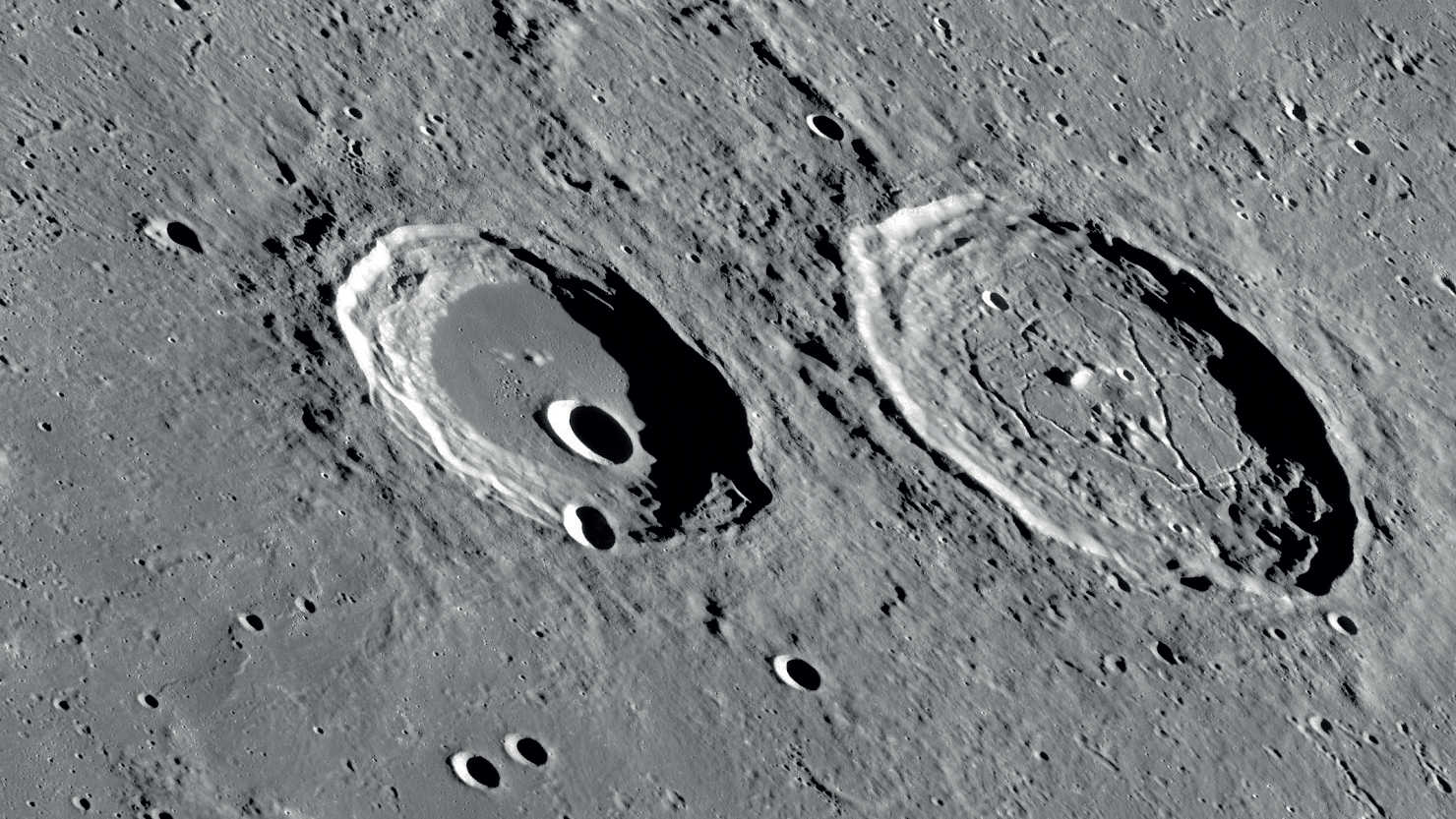Two strong guys
Five days after New Moon, a prominent pair of craters appears in the north-east quadrant; these two have a lot to offer.
 The two craters, Atlas and Hercules, appear to be very different.
NASA/GSFC/Arizona State University
The two craters, Atlas and Hercules, appear to be very different.
NASA/GSFC/Arizona State University
 The attractive pair of craters is located in the north-eastern quadrant of the Moon.
NASA/GSFC/Arizona State University
The attractive pair of craters is located in the north-eastern quadrant of the Moon.
NASA/GSFC/Arizona State UniversityFive days after New Moon, a prominent pair of craters appears in the north-east lunar quadrant in a highland area between Lacus Temporis (Lake of Time) and the eastern edge of Mare Frigoris (Sea of Cold). This pair of craters, Atlas and Hercules, were named after two Greek legends who were distinguished by their superhuman strength. The two craters have a lot to offer to lunar observers.
Hills, rilles and patches
Crater Atlas, which is 87 km wide and 3,000 m deep, has multi-terraced walls that almost seamlessly transition into the undulating crater floor. The hilly areas are only around 100 m to 200 m high and even the small multiple-peaked central mountains only rise around 300 m above the crater floor. If the seeing is very good, you will be able to see the rilles known as Rimae Atlas. The two main rilles begin at the south-east edge of the wall and then branch off in two large arcs in a north-westerly direction.
When the Sun is high, the hilly areas recede into the background and two dark patches appear on the crater floor, located to the south-east and north-west respectively of the central peak close to the crater wall. These are volcanic in origin and were probably caused by pyroclastic ash deposits.
Flooded with lava
 Drawing: when the Sun is low, Hercules’ outer wall rises high above the lunar surface.
Lambert Spix
Drawing: when the Sun is low, Hercules’ outer wall rises high above the lunar surface.
Lambert SpixThe slightly smaller crater Hercules, with a diameter of 71 km and a depth of 3,200 m, looks completely different. The crater floor is very smooth and flooded with dark lava. The only variety on offer is from crater Hercules G which is just 14 km wide, and features three tiny hills in its central peak. Crater Hercules E with a diameter of 9 km lies directly on the southern wall. When the Sun is low at sunset, you can very nicely see how tall Hercules’ outer wall towers above the surrounding lunar surface.
Best visibility 5 or 18 days after New Moon
Author: Lambert Spix / Licence: Oculum-Verlag GmbH
